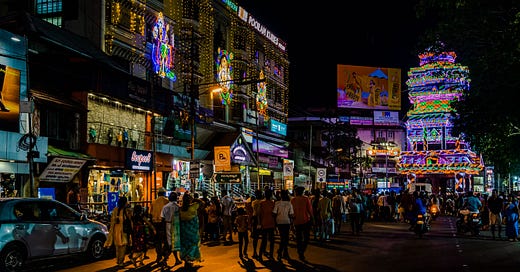Understanding Image Stabilisation: Optical vs. Digital
How Image Stabilisation Works—and How to Use It to Create Sharper, More Professional Photographs
In today’s fast-evolving world of photography, image stabilisation (IS) has become one of the most valuable technologies in helping photographers produce sharper, more stable images—especially in challenging conditions like low light, handheld shooting, or telephoto ranges.
Whether you’re capturing stills or recording video, understanding how stabilisation works—and knowing when to rely on optical vs. digital systems—can make a huge difference in the quality of your final image.
In this blog, we’ll explore:
What image stabilisation actually is
The differences between optical (OIS) and digital (electronic/digital IS)
How in-body stabilisation (IBIS) works
When and how to use IS effectively for professional-quality results
🌀 What is Image Stabilisation (IS)?
Image stabilisation is a technology designed to reduce blur caused by small camera movements or shakes, especially during:
Low-light photography (slow shutter speeds)
Telephoto shots (long focal lengths magnify movement)
Handheld video recording
Macro photography
Travel and documentary work without a tripod
By compensating for these micro-movements, IS allows photographers to shoot sharper images at slower shutter speeds than they otherwise could.
🧠 Types of Image Stabilisation
There are three major types of image stabilisation used in modern cameras and lenses:
🔍 1. Optical Image Stabilisation (OIS)
How it works:
OIS is built into the lens itself. It uses floating lens elements that physically move in response to camera movement, counteracting shake before the light even reaches the sensor.
Key Advantages:
Highly effective for still photography
Works especially well with telephoto lenses
Doesn’t degrade image quality or crop the frame
Always active and precise at the optical level
Best For:
Low-light handheld shots
Long zoom or telephoto lenses
Capturing motionless subjects (portraits, architecture)
🖼️ 2. In-Body Image Stabilisation (IBIS)
How it works:
IBIS is built into the camera body. The sensor physically moves to counteract shake in real-time. It can compensate across 5 axes: pitch, yaw, roll, X, and Y movement.
Key Advantages:
Works with any lens, including vintage manual ones
Effective for both stills and video
More flexible than lens-only IS
Best For:
Low-light handheld photography
Shooting with prime lenses or wide-angles
Handheld video capture
Travel and documentary work
Note: When combined with lens OIS, the two systems often work in harmony for maximum stabilisation (called "dual IS" or "sync IS").
💻 3. Digital/Electronic Image Stabilisation (DIS or EIS)
How it works:
Digital IS stabilises footage or images through software by cropping into the frame slightly and realigning shaky movement during or after capture.
Key Advantages:
Often used in smartphones and entry-level cameras
Helps stabilise handheld video
Lightweight, software-based solution
Best For:
Video recording on cameras or phones
Casual, vlog-style handheld shots
Supplementing minor movement correction
Limitations:
Crops the image (reduces the field of view)
Can introduce distortion or artefacts
Less effective than optical or IBIS systems for stills
📷 When to Use Image Stabilisation
Use IS when:
You're shooting handheld in low light
You're using telephoto lenses without a tripod
You're photographing static subjects at slow shutter speeds
You want to shoot video handheld without external stabilisation gear
🚫 When NOT to Use It
Turn OFF image stabilisation when:
You’re using a tripod: Stabilisation can introduce blur if the system tries to compensate for nonexistent movement
You’re doing panning shots (e.g., following a moving car): Some IS systems may fight the motion unless designed with “panning mode”
You’re using very high shutter speeds: It's often unnecessary
⚙️ Best Practices for Professional Results
✅ Combine IBIS + Lens IS when available
✅ Use a tripod when using slow shutter speeds below 1/10 sec
✅ Don’t rely entirely on IS—master your handholding technique too
✅ For video, consider pairing IS with a gimbal or stabiliser for cinematic smoothness
✅ Know your gear: Some IS systems work better in certain axes or with certain lenses
💡 Pro Tips for Sharper Images with IS
For handheld landscape photography, use IS with a shutter speed of 1/60 or lower
For night cityscapes, switch off IS if using a tripod
For macro photography, even small shakes can ruin detail—IS + tripod = gold
For long lenses (200 mm+), OIS or dual IS is almost essential
🧩 Recap: IS Technology Comparison
Feature Optical IS (Lens) IBIS (In-Body) Digital IS (Software)
Type Hardware (lens) Hardware (camera body) Software-based
Works with any lens ❌ ✅ ✅
Image Crop ❌ ❌ ✅ (minor crop) Best for Stills ✅ ✅ ❌
Best for Video ✅ (if supported) ✅ ✅
Pro-Level Use ✅ ✅ Limited
🌟 Final Thoughts
Image stabilisation is no longer a luxury—it’s a must-have tool for modern photographers and videographers who shoot in the real world. Whether you’re capturing breathtaking landscapes at dusk or filming dynamic street scenes handheld, the right stabilisation system can make the difference between a sharp masterpiece and a shaky miss.
Understanding the difference between Optical, In-Body, and Digital IS helps you choose the right tool—and use it the right way.
Mastering stabilisation is a step toward mastering clarity, confidence, and control in your creative work.
🚀 Join My Photography Community!
If you’re serious about improving your image quality and mastering tools like IS, RAW processing, exposure settings, and creative composition, I invite you to become part of my exclusive photography community.
As a subscriber, you'll get:
📚 Expert tutorials simplified
🎥 Live demos and workshops
💡 Real-world examples from decades of experience
🤝 A creative circle of learners and passionate image-makers
👉 Subscribe now and take your photography to the next level—one sharp image at a time.
Let’s frame the world with precision, passion, and purpose. 📸✨





